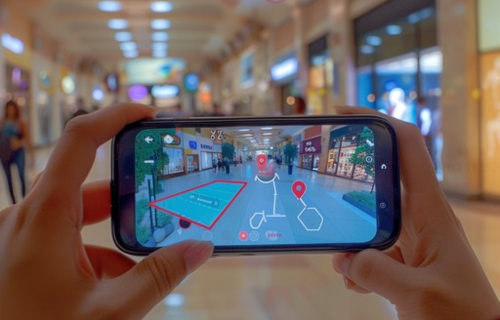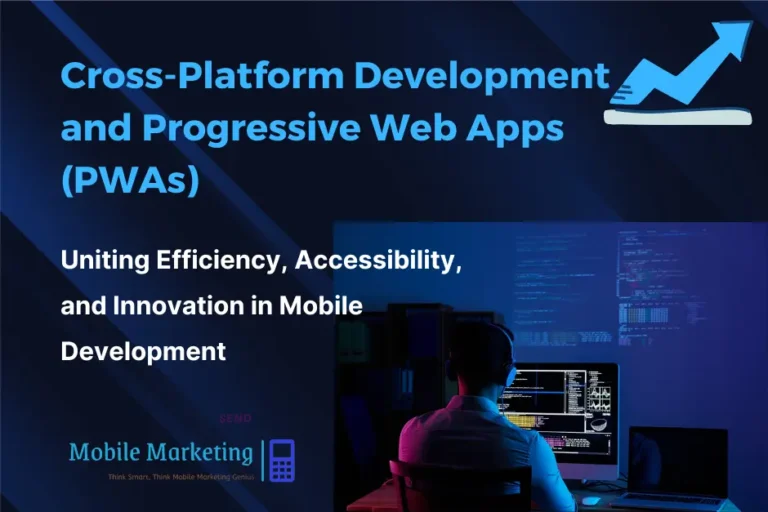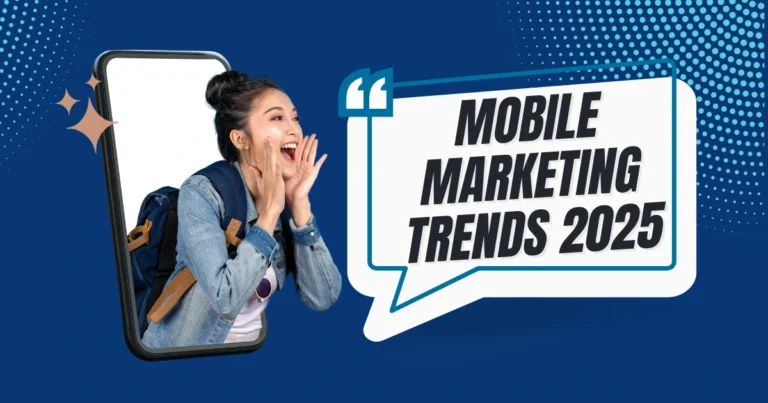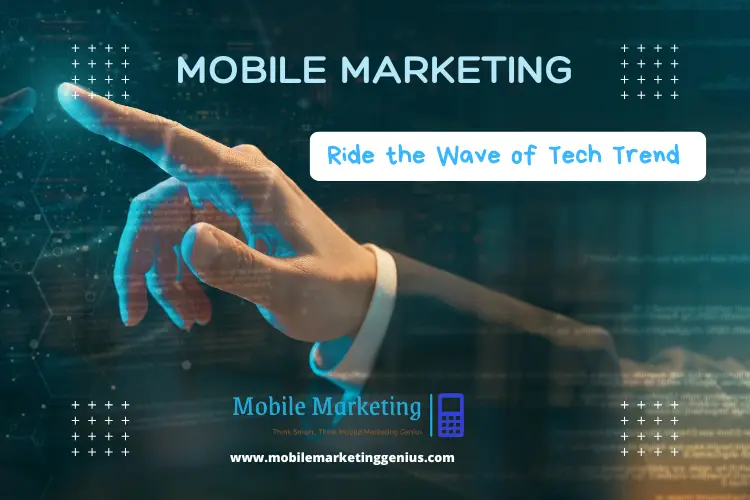Empower Success: Proven In-App Marketing Strategies, Use Cases, & 2025 Trends
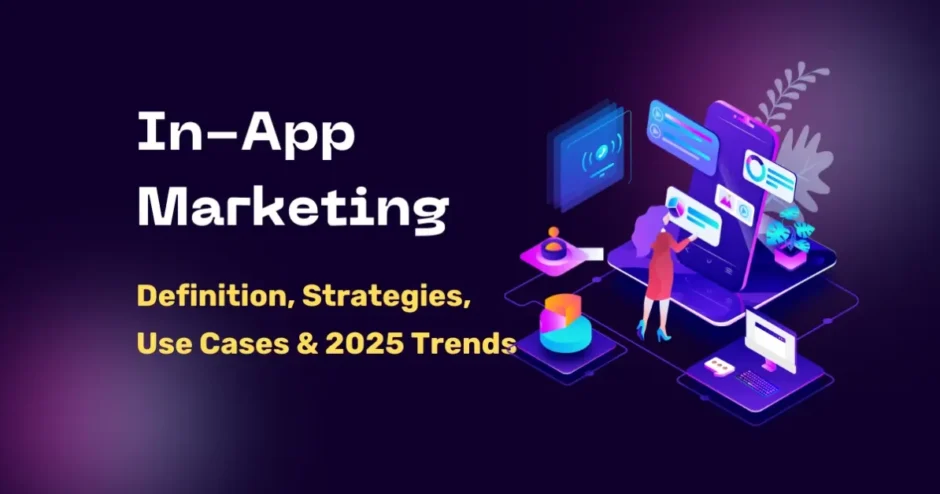
In-app marketing is the practice of engaging users directly within a mobile application through personalized messages, banners, push notifications, and other interactive elements. Unlike traditional advertising methods, in-app marketing occurs in real-time, allowing businesses to connect with users at crucial moments during their app journey.
The significance of in-app marketing in the digital marketing ecosystem cannot be overstated. With consumers spending hours on their favorite apps daily, in-app marketing offers businesses a powerful avenue to capture attention, drive engagement, and ultimately, increase conversions. This approach integrates seamlessly with user behavior, ensuring a tailored experience that feels less intrusive compared to other marketing methods.
One key distinction between in-app marketing and mobile-app marketing lies in their focus areas. While mobile-app marketing targets acquiring new users and promoting app downloads, in-app marketing emphasizes enhancing user experience and retention within the app. Mastering in-app marketing can revolutionize engagement metrics, boost customer loyalty, and drive an impressive return on investment (ROI). Read on to explore how this dynamic marketing strategy can transform your app’s performance.
Table of Contents
1. What is In-App Marketing?
In-app marketing refers to the practice of communicating with users while they are actively using an app. Its scope includes delivering timely and relevant content to enhance user engagement and guide them toward specific actions, such as making a purchase, completing a registration, or exploring new features. This aligns closely with strategies focused on “what is in-app marketing” or “what is in app marketing.”
Unlike mobile marketing, which encompasses external campaigns aimed at driving app installs and awareness, in-app marketing focuses exclusively on engaging and retaining users within the app. This distinction highlights its role in fostering deeper relationships with app users.
Common in-app marketing techniques include:
- Banners and Pop-Ups: Displaying promotional messages or offers during app sessions.
- Push Notifications: Sending reminders or alerts about app updates or promotions.
- In-App Messages: Providing contextual guidance or information to users, such as onboarding tips or feature announcements.
By leveraging these techniques and using in-app marketing tools, businesses can create a seamless and enjoyable user experience, ensuring that customers remain engaged and loyal to the app.
Market Growth: The global in-app advertising market size reached $191.8 billion in 2024 and is projected to expand to $821.8 billion by 2033, exhibiting a CAGR of 16.14% during 2025-2033 (source: Imarc Group)
2. Key Strategies for Effective In-App Marketing
Enhancing User Experience (UX)
- Personalization Strategies: Tailor marketing messages based on user preferences, behavior, and demographics to make interactions more meaningful.
- Timing and Relevance of Marketing Messages: Deliver content at the right moment, such as suggesting upgrades during a checkout process or offering discounts after prolonged inactivity.
Segmenting Your Audience
- Using Behavioral Analytics: Analyze user actions within the app to understand preferences and habits.
- Creating Targeted Campaigns: Develop campaigns for specific user segments, such as new users, frequent buyers, or dormant customers.
Retention-Focused Campaigns
- Loyalty Programs: Reward users for regular app usage with points, badges, or exclusive offers.
- Rewards for Regular Usage: Introduce incentives like discounts or free features to keep users coming back.
Gamification Elements
- Interactive Marketing Approaches: Use quizzes, challenges, and mini-games to engage users and drive participation.
- Quizzes, Games, and Rewards: Integrate gamified elements to make the app experience more enjoyable and rewarding.
Cross-Promotion Techniques
- Promoting Your Other Apps or Services: Introduce related products or apps through in-app banners or recommendations.
These strategies form the backbone of effective in-application marketing strategies, enhancing user experience and driving retention.
Global Ad Spending: In-app advertising expenditure worldwide is projected to reach $352.20 billion in 2024, with an anticipated annual growth rate (CAGR) of 8.68% from 2024 to 2029, culminating in a market volume of approximately $533.90 billion by 2029 (Source: Statista).

3. Platforms for In-App Marketing
Popular Platforms Supporting In-App Marketing
Platforms for in-application marketing provide businesses with the tools to engage users effectively through personalized and timely messages. These platforms support a variety of marketing techniques, including push notifications, in-app messaging, and real-time analytics. Below are some widely used platforms and their features:
- OneSignal: Known for its simplicity, OneSignal specializes in delivering push notifications and in-app messages. It is popular for its free tier, which caters to small businesses and startups.
- Firebase by Google: A comprehensive platform offering analytics, campaign automation, and engagement tools. Firebase’s seamless integration with other Google services makes it a preferred choice for app developers.
- Braze: Focuses on multi-channel messaging and personalized experiences. Its advanced segmentation capabilities enable businesses to target users with precision.
- Clevertap and Adjust: These platforms provide real-time analytics and segmentation, offering a user-friendly interface for creating effective campaigns.
| Platform | Features | Pros | Cons |
|---|---|---|---|
| OneSignal | Push notifications, in-app messages | Free tier available | Limited advanced tools |
| Firebase | Analytics, campaign automation | Seamless Google integration | Learning curve for setup |
| Braze | Personalization, multi-channel messaging | Rich feature set | Higher cost |
| Clevertap | Real-time segmentation, analytics | User-friendly UI | Expensive for small apps |
Selecting the right in-application marketing tools is critical for streamlining efforts and achieving maximum user engagement.
4. Successful Examples of In-App Marketing
Successful in-application marketing campaigns leverage creativity and user insights to drive engagement and retention. Below are some noteworthy examples:
- Spotify: Spotify’s “Discover Weekly” feature offers personalized playlists based on a user’s listening habits. This not only keeps users engaged but also encourages them to explore more content, boosting retention and loyalty.
- Duolingo: Known for its gamified approach, Duolingo motivates users with streaks, rewards, and engaging reminders. These features make language learning fun and addictive, increasing daily active usage.
- Instagram: Instagram integrates sponsored stories and in-app ads seamlessly into its interface. These ads are non-intrusive and resonate with the app’s design, providing a smooth user experience while promoting brands effectively.
These in-application marketing examples highlight the importance of personalization, gamification, and seamless integration in creating impactful campaigns. By studying these strategies, businesses can draw inspiration to craft their own successful campaigns.
5. Differences Between In-App Marketing and Mobile-App Marketing
Clear Differentiation
Understanding the distinction between in-application marketing and mobile-app marketing is crucial for designing effective strategies. Here are the primary differences:
- In-App Marketing: Focuses on engaging users within the app to enhance retention and encourage specific actions such as purchases or feature adoption.
- Mobile-App Marketing: Aims to attract new users and promote app downloads through external channels like social media ads, app store optimization, and email campaigns.
Examples to Illustrate the Distinction
| Aspect | In-App Marketing | Mobile-App Marketing |
| Focus | Retention and engagement | Acquisition and promotion |
| Tools | Push notifications, in-app banners | Social media, app store ads |
This comparison underscores how businesses can align “marketing in-app” strategies to their objectives.
6. How to Measure the Success of In-App Marketing Campaigns
Key Metrics to Track
Measuring the success of app-based marketing campaigns involves tracking various metrics to understand user engagement, retention, and ROI. Key metrics include:
- Engagement Rates: Metrics like click-through rates and session duration indicate how users interact with your app and marketing messages.
- Conversion Rates: Track how many users take the desired actions, such as making a purchase or completing a registration.
- Retention and Churn Rates: Analyze how many users continue to use the app over time versus those who abandon it.
- ROI and Revenue Impact: Evaluate the financial return on your marketing efforts by comparing campaign costs to generated revenue.
Tools for Measurement
Platforms such as Google Analytics for Firebase, Adjust, and Clevertap provide detailed insights into user behavior and campaign performance. These tools are integral to assessing and optimizing “in-application marketing strategies.”
7. In-App Marketing Challenges and Solutions
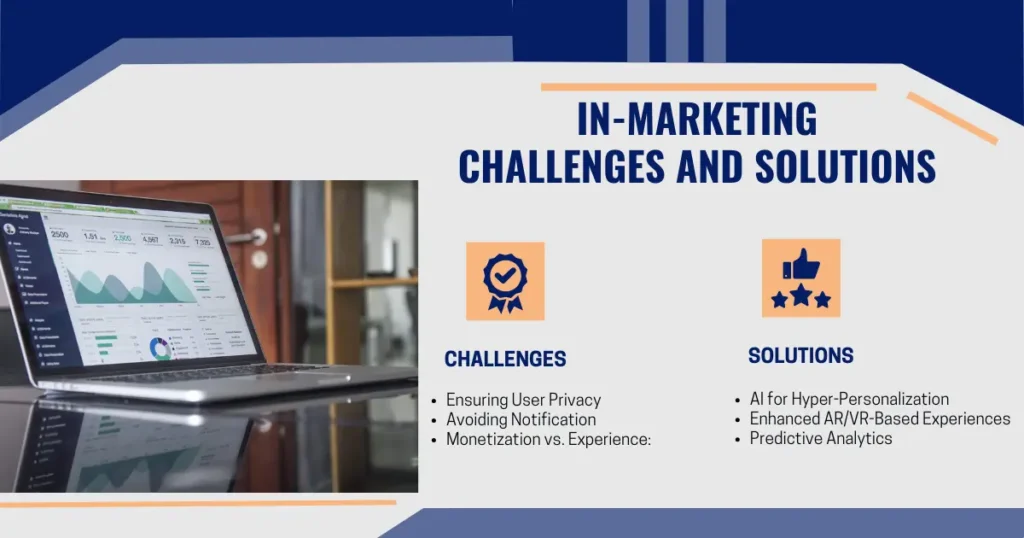
Challenges
In-application marketing presents unique challenges that businesses must address to ensure success:
- Ensuring User Privacy: With regulations like GDPR and CCPA, maintaining compliance and user trust is essential.
- Avoiding Notification Fatigue: Overloading users with frequent notifications can lead to frustration and app uninstalls.
- Monetization vs. Experience: Balancing revenue generation through ads with a positive user experience is critical to retaining users.
Solutions
- Data-Driven Decision-Making: Use analytics to understand user behavior and optimize campaigns accordingly.
- A/B Testing: Experiment with different message formats, timings, and offers to identify what resonates most with users.
- Leveraging User Feedback: Regularly collect and analyze user feedback to improve app features and marketing strategies.
By proactively addressing these challenges, businesses can implement “in app marketing strategies” effectively.
8. Future Trends in In-App Marketing
As technology evolves, in-app marketing is set to become more sophisticated. Here are some future trends shaping the industry:
- AI for Hyper-Personalization: Machine learning algorithms will analyze user behavior in real time to deliver highly personalized content and recommendations, enhancing user engagement.
- Enhanced AR/VR-Based Experiences: Augmented and virtual reality will create immersive marketing campaigns that captivate users and provide unique experiences.
- Predictive Analytics: Using advanced data analytics, businesses can anticipate user needs and behaviors, enabling proactive marketing strategies.
These trends highlight the growing role of technology in shaping “in-app marketing examples” and ensuring businesses stay competitive.
Conclusion
In-app marketing represents a powerful tool for driving engagement, retaining users, and achieving long-term success in the competitive app landscape. By integrating personalized, real-time messaging and leveraging advanced analytics, businesses can create a more engaging app experience that resonates with users.
The strategies and platforms discussed in this article provide a robust framework for implementing effective in-app marketing campaigns. Whether it’s through gamification, segmentation, or cross-promotion, the potential to boost user retention and revenue is immense.
Moreover, staying ahead of emerging trends such as AI-driven personalization and AR/VR-based experiences will ensure businesses remain competitive in the ever-evolving digital landscape. By addressing challenges like user privacy and notification fatigue, businesses can maintain user trust and satisfaction.
Now is the time to embrace in-app marketing and unlock the full potential of your mobile application to achieve unparalleled engagement and ROI.
FAQs
1. What is the main purpose of in-app marketing?
The primary goal of in-app marketing is to engage users within the app, improve retention rates, and drive specific user actions such as purchases or feature adoption.
2. How does in-app marketing differ from push notifications?
Push notifications are a specific tool within the broader in-app marketing strategy. While push notifications reach users outside the app, in-app marketing engages them directly during their app sessions.
3. What are some common tools used for in-app marketing?
Popular platforms include OneSignal, Firebase, Braze, Clevertap, and AppsFlyer, each offering unique features for messaging, analytics, and personalization.
4. Can in-app marketing improve user retention?
Yes, by delivering personalized, relevant, and timely messages, in-app marketing helps improve user satisfaction and loyalty, leading to higher retention rates.
5. What challenges should businesses be aware of in in-app marketing?
Common challenges include ensuring user privacy, avoiding overloading users with notifications, and balancing monetization efforts with a positive user experience.


